Sensors already equip a range of tools to enhance monitoring capacity for conservation. Some of the higher bandwidth technologies, like camera traps and acoustic monitoring systems, have been essential elements of the conservation toolkit for decades, and thus have enough users that we've created dedicated WILDLABS groups to address them. But a whole range of lower bandwidth sensors beyond these core technologies are being increasingly integrated into conservation monitoring systems, and offer rich new insights into the wildlife and ecosystems we're all working to protect. As with many technologies, cost and access have historically been challenges to the adoption of new sensors, but with low-cost and open-source solutions on the rise, we're excited to see what the future of this space holds.
Getting Started with Sensors:
- Watch Shah Selbe's Tech Tutors episode on scaling FieldKit, an open-source conservation sensor toolbox, from a project to a successful conservation tech product.
- Check out our Virtual Meetup about Low-Cost, Open-Source Solutions in conservation tech, including a talk by Alasdair Davies on the Arribada Initiative's work with thermal sensors in early warning systems.
- For a more in-depth introduction, watch the first video in our datalogger mini-series: Freaklabs: How do I get started with Arduino?
In this group, you'll meet others who are using and innovating diverse sensors in their work, discuss ways to make sensors more effective & accessible for conservationists, learn about what sensors are already helping us accomplish in the field, and have the opportunity to ask and answer questions. Join this group to get started!
Header image: Emma Vogel, University of Tromsø
No showcases have been added to this group yet.
Botswana Predator Conservation Trust



- 0 Resources
- 85 Discussions
- 10 Groups
I work in conservation on integrating the technology out there for custom solutions for partners.
- 0 Resources
- 0 Discussions
- 22 Groups
- @adanger24
- | She/Her
Arribada Initiative
Senior Project Manager and Field Specialist


- 2 Resources
- 16 Discussions
- 10 Groups
- @pmarchetto
- | he/him
University of Minnesota
http://about.me/pete.marchetto
- 1 Resources
- 0 Discussions
- 3 Groups
National Geographic Society
Experience utilizing technology to inspire, educate, and create solutions to some of our biggest challenges. Currently, head of the National Geographic Society Exploration Technology Lab, overseeing the development and deployment of research and storytelling technologies.
- 0 Resources
- 1 Discussions
- 16 Groups
- @AthenaRycyk
- | she/her
- 0 Resources
- 0 Discussions
- 8 Groups
- @SamuelHertz
- | He/Him/His
I'm a PhD researcher at Royal Holloway University of London (Centre for GeoHumanities) researching modalities of sound-sensing technologies across climate and conservation sciences. Interested in ethics and histories of acoustic monitoring as well as new visualization methods.
- 0 Resources
- 3 Discussions
- 10 Groups
- 0 Resources
- 0 Discussions
- 4 Groups
- @rohikip
- | He/His/Him
A Techie with passion in biodiversity conservation.
- 0 Resources
- 0 Discussions
- 5 Groups
MSc Engineering / IoT Engineer / Nature Enthusiast
- 0 Resources
- 0 Discussions
- 8 Groups
Movement Ecologist studying the where, why, and how animals move throughout our world. Current work is investigating the movement and energetics of large neotropical bats in a changing environment with ephemeral resources.



- 0 Resources
- 23 Discussions
- 22 Groups
- @matt_hron
- | He/Him
Wildlife Protection Solutions (WPS)
Product Manager at Wildlife Protection Solutions



- 0 Resources
- 8 Discussions
- 8 Groups
Careers
Conservify is seeking a hands-on Senior Software Engineer with front end and back end experience developing rich web and mobile applications, and a strong desire to build a best-in-class product that stands out in both...
9 December 2022
Conservify is seeking a hands-on Senior Product and Production Manager with strong interpersonal and organizational skills to remotely lead a small seasoned team of thinkers, designers and engineers who are shaping the...
9 December 2022
a technology-led solution to understanding the honeybees of the wasp world
8 December 2022
"We develop the use of benthic species as animal oceanographers by combining archival (depth, temperature) data from animal-borne tags, passive acoustic telemetry & citizen-science mark-recapture records for the...
10 October 2022
Apply now for $2,500–$15,000 USD grants for early-stage ideas or projects that address global challenges.
4 October 2022
The device could help scientists explore unknown regions of the ocean, track pollution, or monitor the effects of climate change.
26 September 2022
This paper released by the World Economic Forum and the SPACES coalition shows how businesses can embrace the use of spatial intelligence for action on nature and climate. How can we make sure businesses apply the...
23 September 2022
This role will be employed under Osa Conservation's Movement Ecology Program. Broadly, the project aims to develop and use novel animal tracking technology to increase our understanding of the movement ecology of...
22 September 2022
Careers
The Senior Conservation Technology Specialist will be responsible for providing technical advice and capacity development to GWP project teams on conservation technology, distilling challenges and lessons from project...
22 September 2022
Boost cons tech capacity at an international NGO! Fauna & Flora International is offering a paid three-month internship to consolidate and share best practices for the application of emerging hardware and software...
26 August 2022
Article
An update on Ceres Tags products that are being used in conservation
22 August 2022
Are you interested in joining a team dedicated to changing how conservation is conducted around the world by developing new genetic technologies for conservation, and being part of the new wave of scientists paving a...
15 August 2022
August 2025
event
September 2025
event
March 2026
December 2023
event
November 2023
event
17 Products
Recently updated products
121 Products
3 R&D Projects
84 Organisations
Recently updated products
Recently updated R&D Projects
Recently updated organisations
| Description | Activity | Replies | Groups | Updated |
|---|---|---|---|---|
| First things first, our team — @jcguerra10 , @bmgarrido , and special acknowledgment to @Mantolehmann, who joined... |
|
Build Your Own Data Logger Community, Data management and processing tools, Sensors | 1 year 4 months ago | |
| Hi @Henrikcox I hope you are well. I am not sure if you may remember myself and my colleague from CLS. We had a meeting and met in-person at Earthranger last year. ... |
+15
|
Human-Wildlife Coexistence, Sensors | 1 year 4 months ago | |
| Unless you are planning on making a mesh network between nodes then the total distance spanning the location of all the nodes is important to know, not just the intra node... |
|
Sensors, Protected Area Management Tools | 1 year 5 months ago | |
| Hi Danilo. you seem very passionate about this initiative which is a good start.It is an interesting coincidence that I am starting another project for the coral reefs in the... |
|
Acoustics, AI for Conservation, Animal Movement, Camera Traps, Citizen Science, Climate Change, Community Base, Connectivity, Drones, Emerging Tech, Human-Wildlife Coexistence, Open Source Solutions, Sensors, Software Development, Wildlife Crime, Funding and Finance | 1 year 6 months ago | |
| Real nice video. I'll have another look in the weekend in detail. |
+10
|
Acoustics, Community Base, Protected Area Management Tools, Geospatial, Sensors | 1 year 6 months ago | |
| Fire detection is a sort of broad idea. Usually people detect the products of fire, and most often this is smoke.Many home fire detectors in the US use a radioactive source... |
|
Community Base, Conservation Tech Training and Education, Data management and processing tools, Ethics of Conservation Tech, Human-Wildlife Coexistence, Open Source Solutions, Protected Area Management Tools, Sensors, Wildlife Crime | 1 year 6 months ago | |
| Thank you for sharing! Super interesting, as we don't see many underwater stereo cameras! We also use Blue Robotics components in our projects and have found them reliable and... |
|
Sensors, Camera Traps, Marine Conservation | 1 year 7 months ago | |
| I am working on a prototype to detect and alert for temic & karbadust. They are used for the poisoning of waterholes in South Africa.... |
|
Sensors | 1 year 7 months ago | |
| Will you accept personal/hobbyist focused on conservation on their small plots of land (10-100 acres)?I would, and know others, who would happily pay more than the official... |
|
Camera Traps, Climate Change, Community Base, Connectivity, Emerging Tech, Human-Wildlife Coexistence, Sensors, Wildlife Crime | 1 year 7 months ago | |
| Hi,This is a really late answer but I was new to wildlabs then. I have a security appliance that uses state of the AI models and user defined polygon areas of interest that... |
|
Human-Wildlife Coexistence, Camera Traps, Sensors | 1 year 8 months ago | |
| Featuring some of the very best spider video you'll ever see.. @JayStafstrom has been pushing the boundaries of camera technology,... |
|
Camera Traps, Sensors | 1 year 8 months ago | |
| I always thought a tracker that attached like a slap bracelet would be sweet. |
|
Emerging Tech, Sensors | 1 year 8 months ago |
HWC Tech Challenge Winners Announced
1 November 2017 12:00am
HWC Tech Challenge Update: Meet the Judges
20 October 2017 12:00am
Download New Conservation Tech Guidelines: Camera Traps, Acoustics and LiDAR
11 October 2017 12:00am
Kids, Drones & Science At The Water’s Edge
4 October 2017 12:00am
Saliva-powered paper battery
26 September 2017 2:55pm
DAS: A Scaleable Solution For Protected Area Management
26 September 2017 12:00am
How to lose a BRUV in 10 days
26 September 2017 12:00am
Elephant's Banquet
19 September 2017 12:00am
IoT breakthrough - applications for wildlife conservation?
15 September 2017 3:10pm
Thermal cameras and wildlife
26 July 2017 6:51pm
21 August 2017 12:17pm
Abstract here from the IMC Congress in Perth, they found the higher-res versions are much better than the less expensive (e.g. iphone) versions when it comes to finding animals.
Now you see me: How thermal imaging increases detection of cryptic nocturnal mammals in tropical regions
Avril Underwood1 , Mia Dehre-Miller2 1. James Cook University, Smithfield, Queensland, Australia 2.
University of Lancaster, Lancaster, United Kingdom Accurate measures of species abundance and distribution underpin effective wildlife management and conservation strategies. Obtaining these data is very challenging when researching the cryptic nocturnal arboreal mammals of in the dense forest of the Wet Tropics. Our research shows that using a hand-held thermal imager significantly increases the detection rate of all mid-sized arboreal mammals when compared to the most commonly used method of spotlighting. We determine the optimal environmental and mechanical parameters for thermal imaging, and we investigate ‘cost-versus-result’ of hand-held imaging devices currently available on the market. We suggest that hand-held thermal imaging is a great emerging technology for cryptic arboreal mammal detection across tropical forested regions and beyond.
21 August 2017 12:20pm
My own experience is with the FLIR iphone attachment, just informal testing, but hasn't been that great at finding animals. I also think it would work better in the early AM. In the evening there can still be a lot of rocks and trees still warm from the sun.
Funding Opportunity: Leverage space technology for wildlife protection
6 July 2017 12:56pm
Leverage Space Technology for Wildlife Protection with the European Space Agency Kick-start Grant
5 July 2017 12:00am
Trialing Audiomoth to detect the hidden threats under the canopies of Belize
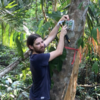 Andrew Hill
and 1 more
Andrew Hill
and 1 more
27 June 2017 12:00am
Biomaker Challenge - up to £1000 support for prototyping sensors and instrumentation related to biology
19 June 2017 3:46pm
19 June 2017 3:51pm
Hey Jenny,
Thanks for sharing this, looks really interesting! In addition to WILDLABS members potentially getting involved, it'd be great to hear about some of the projects that get developed through the challenge. It looks like they're all going to be shared openly on github! Perhaps you could highlight or direct folks here to any as they emerge that you think might be particularly relevant?
Steph
19 June 2017 4:03pm
Hi Steph
Sure - we'll have the projects confirmed by 30 June and I can highlight ones that might be of interest!
Jenny
From the Field: Eric Becker and designing sensors for wildlife
22 May 2017 12:00am
acoustics for Human-Wildlife Conflict Prevention, Anti-poaching, and more
27 April 2017 6:43pm
From the Field: Dr Raman Sukumar and Technology Developments Needed to Conserve Elephants
5 April 2017 12:00am
Lasers in the Jungle Somewhere: How Airborne LiDAR Reveals the Structure of Forests
 Phil Wilkes
Phil Wilkes
4 April 2017 12:00am
Heat Maps
2 March 2016 3:18pm
31 March 2017 10:45am
Hi @AdamBloch
I'd like to know more about your setup. I'm monitoring temperatures on a nature reserve using an array of 100 iButton Thermocron temperature sensors. I'm interested in what the benefits of using Arduino and Raspberry Pi might be. I need to collect my sensors in and read through a USB device. Then there's the interpolation and plotting of the data, and I'm particularly interested in how you are filtering and querying your data i.e. 'selectable [time?] range'.
Thanks
31 March 2017 9:49pm
Hi Thomas
We are mapping a very small area in real time. The data rate is controlled by the time it take to read all the DS18B20s. The logger I use in the Octogons is using about 90 sensors and refreshes about every 5 to 15 seconds. The data is store as a CSV in series of files.
Best thing to do is drop me a PM and your number.
Many thanks
Adam
15 Risks and Opportunities for Global Conservation
31 March 2017 12:00am
From the Field: Paul Millhouser and tracking migrating kestrels with low cost, light based geolocators
29 March 2017 12:00am
The Noise Egg: Testing the Effects of Underwater Noise on Aquatic Animals
27 March 2017 12:00am
From the Field: María José Bolgeri and tech to alleviate Puma-Human conflict
22 March 2017 12:00am
Photogrammetry: mapping caves and other environments
19 January 2017 11:46am
8 March 2017 1:49pm
Hi Ollie,
You can do the photogrammetry without a drone. You just need a tripod and a camera. The drone is useful because it can move to locations automatically ensuring that you have correct overlap but in caves you obviously will not have the GPS signal you need for most off the shelf units to navigate.
Thom mentioned to me a device called a Zebedee, which should do what you are hoping for. I don't know anyone who has one though and I'm afraid I don't have a LiDAR unit to lend.
Tom
8 March 2017 1:54pm
A colleague showed me this last week - laser scanning in Nottingham's 'caves' - scroll down and check out the video.
http://tparchaeology.co.uk/caves/caveswebsite/index.htm
8 March 2017 2:03pm
For good measure, here's some cave survey porn of Hang Son Doong cave in China.
https://www.youtube.com/watch?v=tOH4gbW18Ts
#Tech4Wildlife Photo Challenge: Our favourites from 2016
1 March 2017 12:00am
A hive of activity – CAD designers are crafting an open future for bees
20 December 2016 12:00am
Conservation Leadership Programme 2017 Award
21 November 2016 12:00am
5 Smart Technologies That Will Crack Down On Wildlife Trafficking
14 November 2016 12:00am
Neotropical Migratory Bird Conservation Act grants via USFWS
8 November 2016 12:00am
How do Wildlife Crime Experts view Remote Sensing Technologies used to Combat Illegal Wildlife Crime?
7 November 2016 12:00am











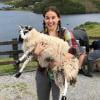




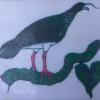
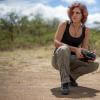

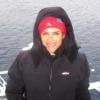




















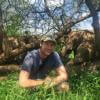
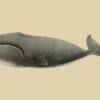
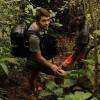



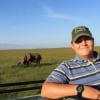
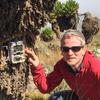

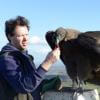




26 July 2017 8:33pm
Oh, cool! It'd be interesting seeing if it could be used for tracking as well. I've used some handheld cameras and looked at footprints, but those disappeared pretty quickly.